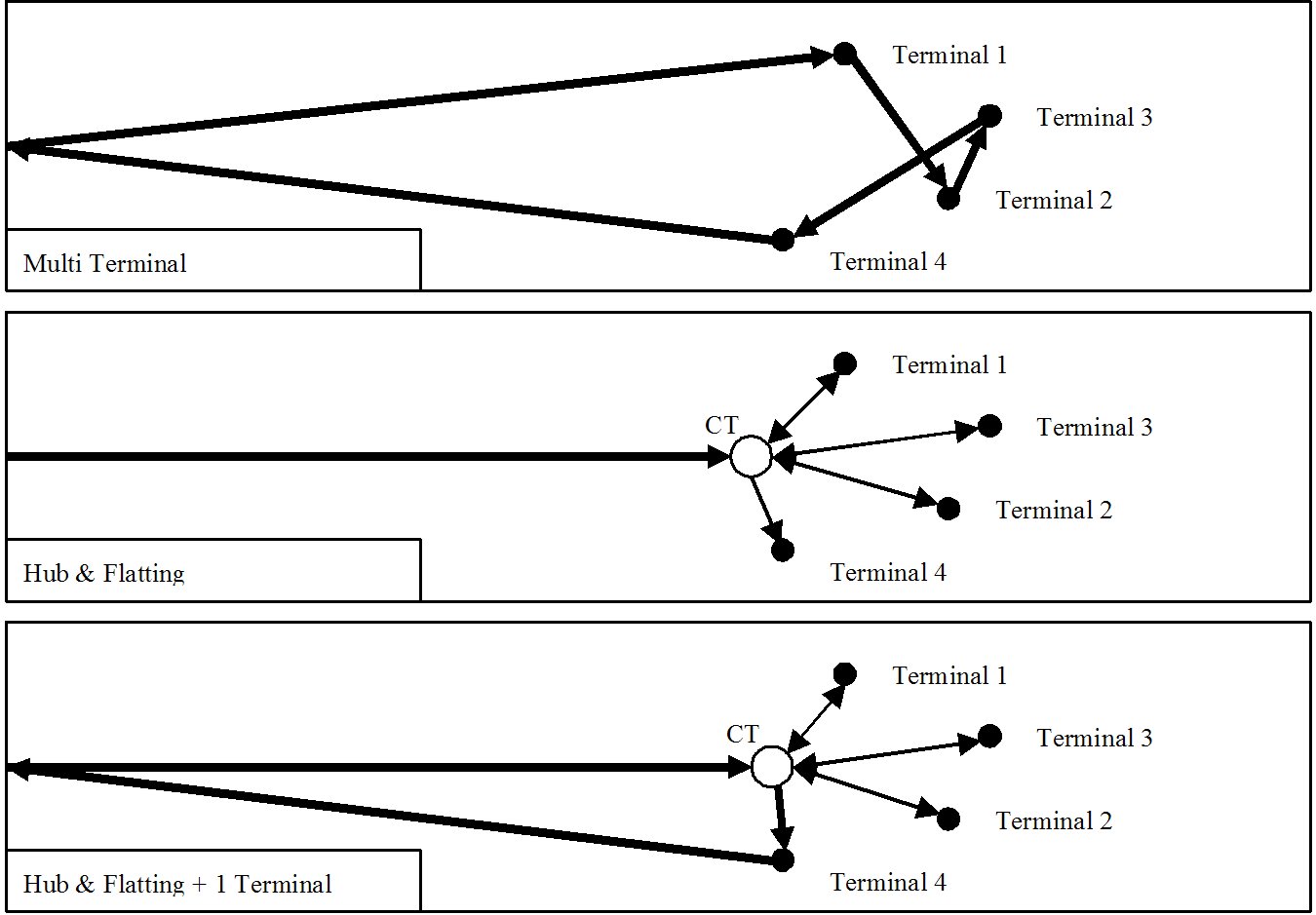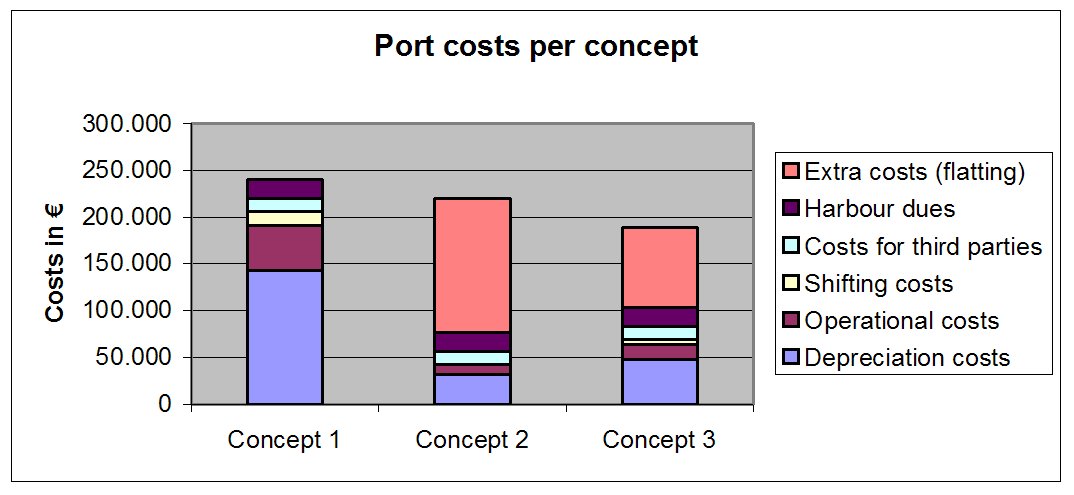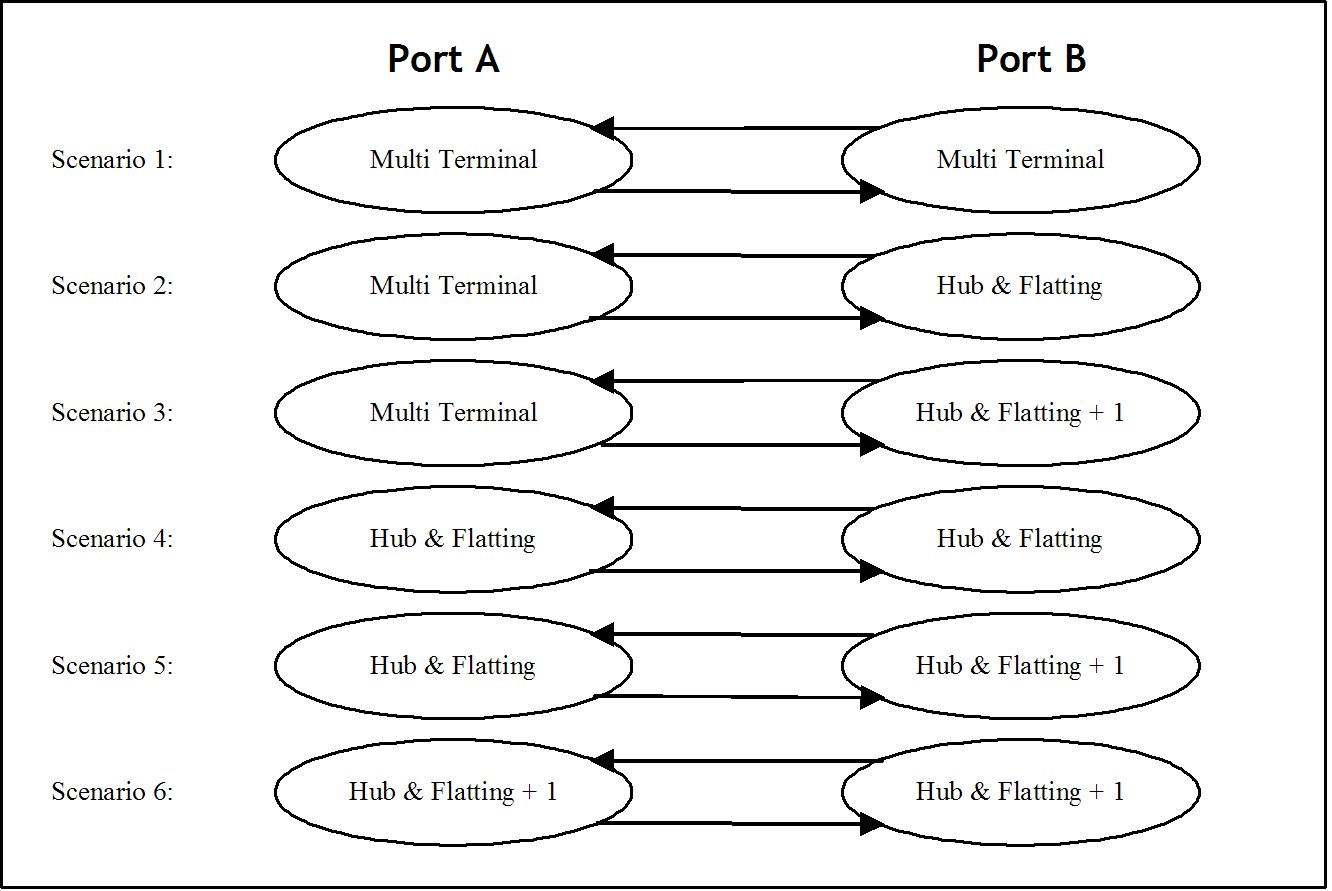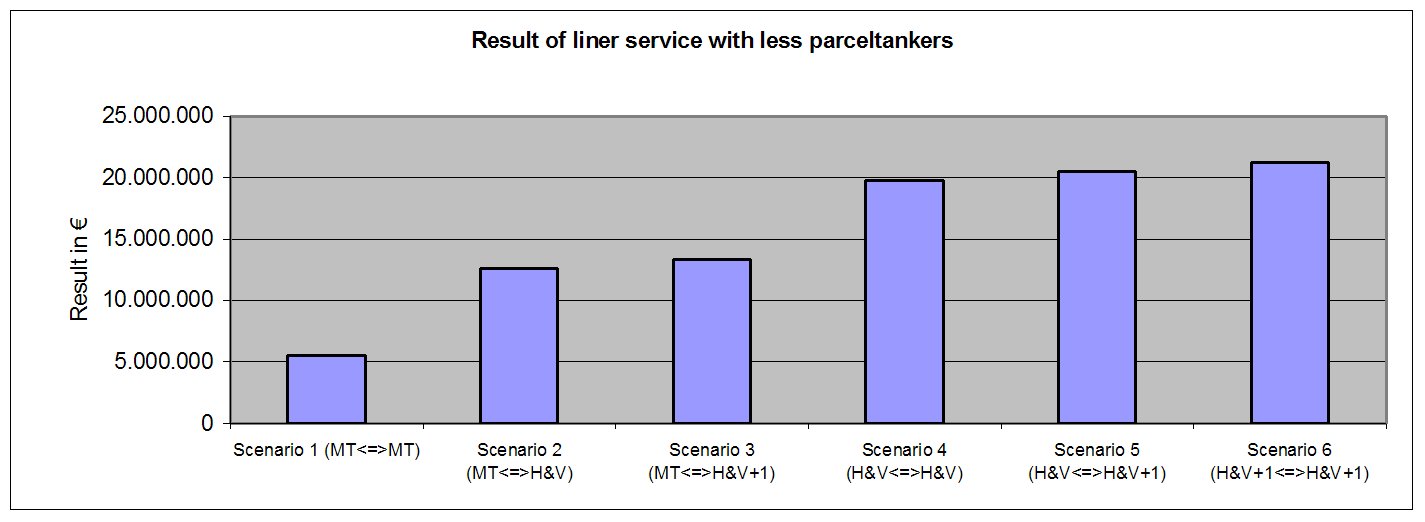B.C. Bührmann
Chemicaliëntransport in de 21ste eeuw.
Computer program,
Report 2003.TL.6746, Transport Engineering and Logistics.
Introduction
During a portcall, a parceltanker visits several terminals (average: four
terminals) to load or discharge chemicals. These chemicals can be
transhipped to a tank at a terminal or to another vessel, a barge or a
coaster. Due to a poor organisation of the transportation and different
interests between terminal operators and shipowners parceltankers stay in
port for a long time (average nine days), which affects the profitability
of the parceltankers in a negative way.
Loading and discharging the parceltanker at one location only (central
terminal) can reduce porttime. The cargo that has a terminal as the final
destination is transhipped into a smaller vessel and transported to the
terminal. These actions result in extra costs, because of the extra
transhipment, transport and cleaning of tanks. On the other end the yearly
profits of a parceltanker could rise, as the porttime of the parceltankers
is reduced to a couple of days. The model described in this report
determines whether the extra profits counterbalance the extra cost for
transportation. Although the model can be used for al kinds of
parceltankers, ports and liner services, there has been chosen for one of
the largest parceltankers (37.015 dwt), which runs a weekly service
between Houston and Rotterdam.
Model on port level
The model consists of two levels for calculations, port level and chain
level. First of all the costs of a stay in port are calculated with the
model on port level. Three concepts are developed for the transhipment of
chemicals (see figure 0-1):

Figure 0-1: Three used concepts
- Multiterminal: the parceltanker visits 4 terminals and stays in port
for 9 days
- Hub & Flatting: the parceltanker visits the central terminal only
and stays at the terminal for 2 days
- Hub & Flatting + 1 terminal: the parceltanker visits the central
terminal and is shifted to another terminal to tranship a big amount of
cargo and stays in port for three days.
In figure 0-3 the results are given for the model on port level. The
results show the different kind of costs during a stay in the port of
Rotterdam.

Figure 0-2: Portcosts per concept
Model on chain level
To determine the consequences of a shorter stay in port on the
profitability of the parceltankers the model is extended to chain level.
The three different concepts are employed on the ports of Houston and
Rotterdam, between which a service is held with weekly departures. A
combination of two concepts forms a scenario a total six scenarios are
possible. Scenarios 2 till 6 are compared with scenario 1, which
represents the present situation of the transportation of chemicals.

Figure 0-3: Six scenarios
Results
The physical results are calculated for each scenario before the financial
results are given. The physical results consist of the percentage
porttime, the amount of parceltankers needed to run the liner service and
the yearly amount of departures for every parceltanker. The financial
results are given for each departure of a parceltanker, for every single
parceltanker and for the liner service in total. It seems that with a
shorter stay in port less parceltankers are needed to run the liner
service. The parceltankers that remain can be used in other regions. The model
is based on a new liner service. The savings on the depreciation costs are
added to the result (see figure 0-4).
The results of the scenarios, where parceltankers are transhipped at a
central terminal in both ports, hardly differ and are much better than the
result in the present situation.

Figure 0-4: Result liner service with the influence of less parceltankers
Sensitivity analysis
It is expected that in the future the percentage of direct transhipment to
another vessel will rise. Therefore there has been checked what the
consequences of this affect are in the future. As expected the
implementation of a central terminal shows better results, because less
cargo has to be transported extra. The use of smaller parceltankers could
reduce the differences between scenario 2 till 6 and the present situation
if the occupancy rate of the parceltankers increases. A liner service
between two ports (Rotterdam and Singapore) that are situated further away
from each other, also reduces the differences between the scenarios. Finally
the model is tested for the situation, where transhipping equipment is taken
from the parceltankers and placed at the central terminal. The results give
reason for further research.
Conclusion
The model used for calculations on port level shows that the implementation
of a central terminal saves costs during a stay in a port. On chain level the
model shows that the profitability of parceltankers rises.
Reports on Transport Engineering and Logistics (in Dutch)
Modified: 2003.11.29;
logistics@3mE.tudelft.nl
, TU Delft
/ 3mE
/ TT
/ LT.




